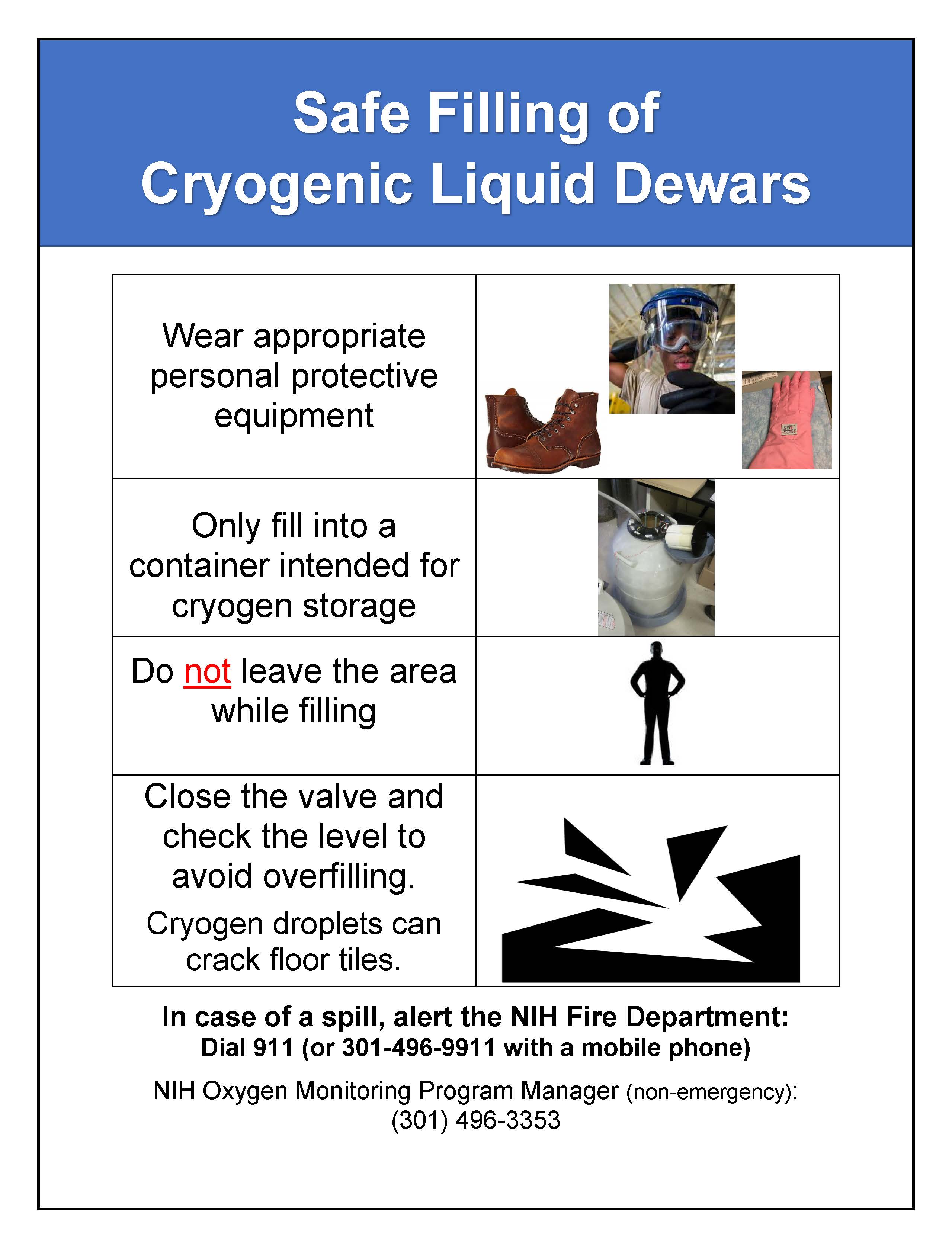Compressed gases and cryogenic liquids (e.g. nitrogen, helium, and carbon dioxide) may be used in laboratories and other locations for various applications and work procedures. Nitrogen and helium are two of the more commonly used compressed gases, which are extremely cold while in a compressed, liquid state. Their freezing properties are advantageous when storing laboratory samples and/or components, or to maintain extremely low temperatures and preserve superconductivity in magnetic resonance imaging (MRI) and nuclear magnetic resonance (NMR) machines. These two gases are inert, colorless, odorless, noncorrosive and nontoxic.
When liquid nitrogen and/or helium are dispensed they release nitrogen and/or helium gas, which are simple asphyxiants (they displace oxygen from air when present in high concentrations). Displacing oxygen creates the potential for an oxygen deficient or hazardous atmosphere, which is an occupational hazard. The Occupational Safety and Health Administration (OSHA) specifies that a hazardous atmosphere may include one where the oxygen concentration is below 19.5% (or above 23.5%).
Primary Protocol Requirements
Safety Signage
A minimum of two signs is required with every oxygen monitoring device installation. Sign A instructs room occupants to evacuate immediately if the alarm sounds. Sign A shall be posted as close as possible to each oxygen monitoring device in a position that allows for clear visibility to the room occupants.
Sign B prevents additional personnel from entering a room with an alarm sounding, and shall be posted on or adjacent to the outside of each entry door to a room with an oxygen monitoring device at approximately eye level. Sign B has a fillable component to insert at least two local emergency contacts (e.g. lab manager and PI).
The following signs are a program recommendation, rather than a requirement. Locations that use cryogenic liquids and/or compressed gases may experience hazards that go beyond oxygen monitoring, such as cold hazards. Posting signs near cryogenic storage freezers, compressed gas storage areas, and cryogenic liquid dispensing stations remind users to use safe work practices.

Download 'Safe Filling of Cryogenic Liquid Dewars' Sign
Contact Information
For assistance with oxygen monitoring devices, contact the Oxygen Monitoring Device Program Manager in DOHS at (301) 496-3353.
